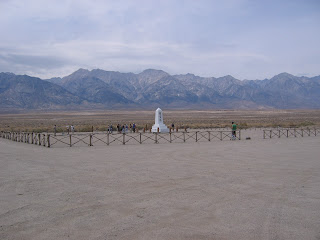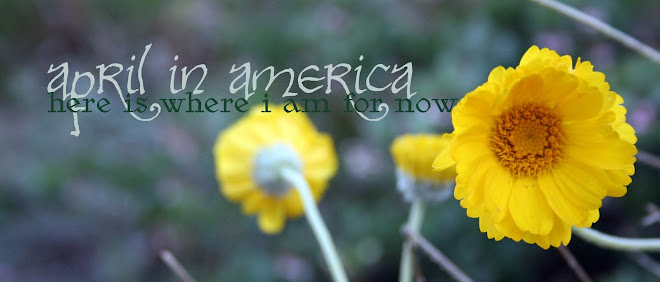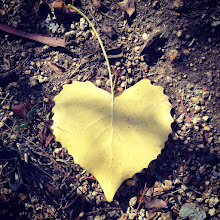skip to main |
skip to sidebar
 This is a photo of the cemetery at Manzanar, which is a historic site now part of the national park service. That's Mt. Williamson in the background (i think); Mt. Whitney is just a tad bit south.
This is a photo of the cemetery at Manzanar, which is a historic site now part of the national park service. That's Mt. Williamson in the background (i think); Mt. Whitney is just a tad bit south.
There are more graves in the cemetery than people actually buried there, but more people died in the camp than are buried there too. I guess family members came and got the remains to rebury them closer to home. One of the internees designed the monument, and many people come to pay homage to the dead: there are paper cranes, coins, and other paraphernalia on the fence and around the markers.
Manzanar is definitely worth a stop if you're on your way to Mt. Whitney, Mammoth or the Sierras from SoCal! For one thing, the exhibit is incredibly informative and has lots of artifacts to look at, including a model of the housing and the entire camp. The exhibits are also air-conditioned, and there are clean bathrooms and great-tasting drinking fountains. And it's free! What more does one need for a great stop on a long trip?
 This is a photo of tufa from the South Tufa Scenic Area at Mono Lake.
This is a photo of tufa from the South Tufa Scenic Area at Mono Lake.
I just got back from this summer's field trip up to the Eastern Sierras. We saw Manzanar, the Lower Owens River Project, various hot springs, Mono Lake, Bodie, Rush Creek, Lee Vining & Lee Vining Canyon (a glacier-carved canyon), and Tuolumne Meadows. I'll post more photos in time...this is a study break. The trip and the company--my classmates and a professor and his wife--were fantastic, but it was sure nice to get home and take a hot shower! My hair still smelled of camp smoke last night.
The tufa posts out in the water are home to several osprey nests, which you can see through binocs or a telescope. They are formed by calcium carbonate precipitates from fresh water springs that bubble into the highly alkaline, carbonated lake. The weather was hot, and the scenery was a little surreal albeit gorgeous. Lots of seagulls bobbed around like bath duckies because of the buoyancy of the water as they ate brine shrimp and brine fly larvae.
birding life list (in process!)
- White-crowned Sparrow (Zonotrichia ?) in winter
- Western Wood-Pewee (Contopu sordidulus)
- Western Tanager (Piranga ludoviciana)
- Western Scrub Jay (Aphelocoma californica)
- Western Bluebird (Sialia mexicana)
- Tufted Titmouse (Baeolophus bicolor)
- Stellar's Jay (Cyanocitta stelleri)
- Sparkling Violetear (Colibri coruscans)
- Snowy Owl (Nyctea scandiaca)
- Snowy Egret (Egretta thula)
- Ruddy Duck (Oxyura jamaicensis)
- Red-winged Blackbird (Agelaius phoeniceus)
- Red-tailed Hawk (Buteo jamaicensis)
- Pied Crow (Corvus albus)
- Northern Mockingbird (Mimus polyglottos)
- Northern Cardinal (Cardinalis cardinalis)
- Mourning Dove (Zenaida macroura)
- Mallard (Anas platyrhynochos)
- male Superb Sunbird (Cinnyris superbus) i think
- Malachite Kingfisher (Alcedo cristata)
- Lesser Goldfinch, greenbacked (Carduelis psaltria)
- Lazuli Bunting (Passerina amoena)
- Indigo Bunting (Passerina cyanea)
- House Finch (Carpodacus mexicanus)
- Hooded Oriole (Icterus cucullatus nelsoni)
- Greater Roadrunner (Geococcyx califorianus)
- Great Horned Owl (Bubo virginianus)
- Great Blue Heron (Ardea herodias)
- Congo African Grey (Psittacus erithacus erithacus)
- Common Garden Bulbul (Pychonotus barbatus)
- Cinnamon Teal (Anas cyanoptera)
- Cattle Egret (Bubulcus ibis)
- Canada Goose (Branta canadensis)
- California Towhee, juvenile (Pipilo crissalis)
- California Thrasher (Toxostoma redivivum)
- Brown Pelican (Pelecanus occidentalis)
- Blue Jay (Cyanocitta cristata)
- Black-crowned Night-Heron (Nycticorax nycticorax)
- Black-capped Chickadee (Poecile atricapillus)
- Black Phoebe (Sayornis nigricans)
- Black Crowned Waxbill (Estralida nonnula)
- Bald Eagle (Haliaeetus leucocephalus)
- Anna's Hummingbird (Calypte anna)
- American Robin (Turdus migratorius)
- American Kestrel (Falco sparverius)
- American Goldfinch (Carduelis tristis)
- American Coot (Fulica americana)
- American Avocet (Recurvirostra americana)
- African Pygmy-Kingfisher (Ispidina picta)
- Acorn Woodpecker (Melanerpes formicivorus)



